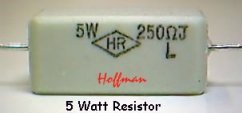Somtimes having thinhs to rigid can be their downfall, just when you think you are improving things.
Try to bend a coat hanger in half, count the turns, then take a piece of 104 starnd wire and try to break it, count the turns, so think mechanical first, then electrical, then thermal, and you will have a reliable product.
Thinkl of all those loose carbon comps that fender had bouncing around, do you think he was an idiot?
Of course he was!
He just ran the cash register.
Doc Kaufman was the idiot.
I mean RF to audio genius.
RF can rattle parts like a microwave, torque on inductors, look how strong some of those rf tank coils are, they have the resonant frequency tuned to the lead length,. when ever you have an electro mechanical device, you havea vector in the physical uinioverse.
There is mechanical force on the coil in a transformer when it is working, so un like carbon comp, you have a mechanical force inside that resistor , such that, when you resonate the inductasnce of the wire wound coil with what ever guitar note you are playing, and at high volume, if you do not believe this, put a mechanical senmsor on a wire wound resistor, and on carbon comp, and measure the delta.



























![Soldering Iron Kit, 120W LED Digital Advanced Solder Iron Soldering Gun kit, 110V Welding Tools, Smart Temperature Control [356℉-932℉], Extra 5pcs Tips, Auto Sleep, Temp Calibration, Orange](https://m.media-amazon.com/images/I/51sFKu9SdeL._SL500_.jpg)






